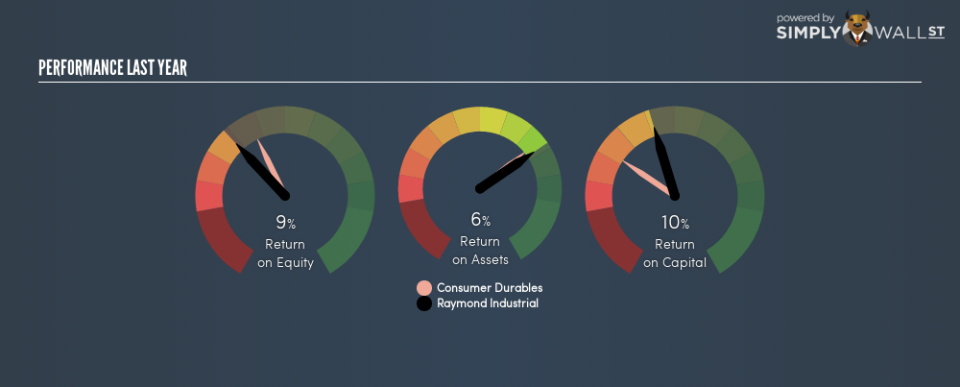Why We’re Not Keen On Raymond Industrial Limited’s (HKG:229) 10.0% Return On Capital

Today we’ll look at Raymond Industrial Limited (HKG:229) and reflect on its potential as an investment. To be precise, we’ll consider its Return On Capital Employed (ROCE), as that will inform our view of the quality of the business.
First up, we’ll look at what ROCE is and how we calculate it. Then we’ll compare its ROCE to similar companies. Finally, we’ll look at how its current liabilities affect its ROCE.
Understanding Return On Capital Employed (ROCE)
ROCE is a metric for evaluating how much pre-tax income (in percentage terms) a company earns on the capital invested in its business. Generally speaking a higher ROCE is better. In brief, it is a useful tool, but it is not without drawbacks. Author Edwin Whiting says to be careful when comparing the ROCE of different businesses, since ‘No two businesses are exactly alike.’
So, How Do We Calculate ROCE?
Analysts use this formula to calculate return on capital employed:
Return on Capital Employed = Earnings Before Interest and Tax (EBIT) ÷ (Total Assets – Current Liabilities)
Or for Raymond Industrial:
0.10 = HK$44m ÷ (HK$872m – HK$264m) (Based on the trailing twelve months to September 2018.)
Therefore, Raymond Industrial has an ROCE of 10.0%.
See our latest analysis for Raymond Industrial
Does Raymond Industrial Have A Good ROCE?
ROCE is commonly used for comparing the performance of similar businesses. It appears that Raymond Industrial’s ROCE is fairly close to the Consumer Durables industry average of 9.9%. Aside from the industry comparison, Raymond Industrial’s ROCE is mediocre in absolute terms, considering the risk of investing in stocks versus the safety of a bank account. Readers may find more attractive investment prospects elsewhere.
As we can see, Raymond Industrial currently has an ROCE of 10.0% compared to its ROCE 3 years ago, which was 5.3%. This makes us think the business might be improving.
When considering ROCE, bear in mind that it reflects the past and does not necessarily predict the future. Companies in cyclical industries can be difficult to understand using ROCE, as returns typically look high during boom times, and low during busts. ROCE is only a point-in-time measure. How cyclical is Raymond Industrial? You can see for yourself by looking at this free graph of past earnings, revenue and cash flow.
What Are Current Liabilities, And How Do They Affect Raymond Industrial’s ROCE?
Current liabilities include invoices, such as supplier payments, short-term debt, or a tax bill, that need to be paid within 12 months. Due to the way ROCE is calculated, a high level of current liabilities makes a company look as though it has less capital employed, and thus can (sometimes unfairly) boost the ROCE. To check the impact of this, we calculate if a company has high current liabilities relative to its total assets.
Raymond Industrial has total liabilities of HK$264m and total assets of HK$872m. As a result, its current liabilities are equal to approximately 30% of its total assets. Raymond Industrial’s ROCE is improved somewhat by its moderate amount of current liabilities.
What We Can Learn From Raymond Industrial’s ROCE
Unfortunately, its ROCE is still uninspiring, and there are potentially more attractive prospects out there. Of course, you might find a fantastic investment by looking at a few good candidates. So take a peek at this free list of companies with modest (or no) debt, trading on a P/E below 20.
I will like Raymond Industrial better if I see some big insider buys. While we wait, check out this free list of growing companies with considerable, recent, insider buying.
To help readers see past the short term volatility of the financial market, we aim to bring you a long-term focused research analysis purely driven by fundamental data. Note that our analysis does not factor in the latest price-sensitive company announcements.
The author is an independent contributor and at the time of publication had no position in the stocks mentioned. For errors that warrant correction please contact the editor at editorial-team@simplywallst.com.

